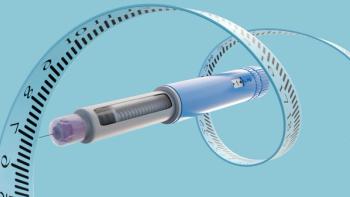
- Fall 2021
- Volume 15
- Issue 02
Make an Impact Through Point-of-Care Testing
Technicians are instrumental in test processing and have proved capable of direct patient care under supervision.
Pharmacists have long been the most accessible health care professionals, especially in rural areas. But behind every great pharmacist stands a team of amazing and often greater pharmacy technicians. As the role of community pharmacists has continued to expand, technician roles are similarly changing and growing. No longer simply aides in prescription order preparation and dispensing, technicians have increasingly become directly involved in patient care, largely because of the COVID-19 pandemic.
As of October 8, 2021, and since January 23, 2020, case reports to the CDC of the novel SARS-CoV-2 in the United States totaled nearly 44 million.1 In their effort to help slow the spread of infection, community pharmacies have experienced a large impact on their workflow from COVID-19 testing and immunizations.
More than 400 million doses of COVID-19 vaccine have been delivered in the United States since the first emergency use authorization was issued on December 11, 2020.1 Technicians have played a significant role in this distribution as team members supporting the Federal Retail Pharmacy Program.
Over the first 7 months of the collaboration between the federal government and retail pharmacies to distribute COVID-19 vaccines more quickly, the pharmacies reported more than 133 million doses as having been administered.2 Community pharmacies have additionally seen a marked increase in demand to participate as testing locations, both for samples to be collected for laboratory testing and as testing facilities to receive rapid results. Technicians have been instrumental in test processing and can provide direct patient care under supervision. Point-of-care tests (POCTs) have long been widely available as at-home testing kits for drug detection and pregnancy, and now even for COVID-19 detection. Additionally, multiple POCT options are available to provide rapid, reliable results for chronic disease screening and monitoring, as well as acute infection diagnosis. With proper planning, setup, and execution, these testing devices in community pharmacies could provide a great, easily accessible service for patients. Fast results available from POCT can aid in limiting the spread of infectious diseases, faster treatment, shorter recovery times, and improved outcomes.
Implementing POCT opportunities within community pharmacies is not novel. Large chain pharmacy clinics and independent pharmacy options such as IndyCare in Hillsborough, North Carolina, already offer accessible, cost-effective, and quick care via midlevel practitioners.
However, many of these businesses are more common in suburban or urban areas, and rural community locations may have a growing need for similar health care options. POCTs have traditionally been more widely available in hospitals and primary care offices but are not limited to these settings. In community pharmacies without clinics, properly trained technicians could have a significant impact, especially in rural areas, by offering POCT. Advanced certificate training programs for technicians are available through many continuing education avenues and pharmacy associations, including the American Society of Health-System Pharmacists and the National Alliance of State Pharmacy Associations. Locations staffed by pharmacists with advanced prescribing authority or with an established collaborative practice agreement can use test results administered by technicians to provide fast treatment options or, if needed, referrals for further care. Additionally, statewide protocols may be issued by a state board or agency that authorizes pharmacists to prescribe medication under guidelines.3
Glycated hemoglobin A1c monitoring, cholesterol screenings, hepatitis or HIV diagnosis, and international normalized ratio levels are examples of disease state POCT options. However, the greatest effect on POCT by technicians is in acute infection management. Rapid test results available at community pharmacies for some of the most common illnesses, which may require simple treatments, could decrease infection spread and limit unnecessary antibiotic prescribing through protocol limitations; they could also increase access to quick and safe care. Medical technology companies, such as Abbott and BD, manufacture and distribute POCT devices used in numerous health care settings. Some testing units are specifically tailored to a single test result, whereas others can test for multiple findings.
The BD Veritor Plus System is a handheld device that allows testing for SARS-CoV-2, influenza A and B, group A Streptococcus, and respiratory syncytial virus (RSV).4 The Abbott ID Now is a rapid, instrument-based, isotheral system for the qualitative detection of infectious diseases,5 including influenza A and B, group A Streptococcus, and RSV. A similar unit is available for the testing for SARS-CoV-2. These devices would be ideal for technicians administering POCT in rural communities for acute infection management.
Amber Mizelle, lead technician at CVS in Elizabeth City, North Carolina, has found her time as a certified vaccinator rewarding. She believes that increasing her patient care interactions through POCT would be even more fulfilling.
“I believe it would be beneficial if technicians were in the position to more widely offer POCT for things like strep, COVID-19, and flu. Our availability would help relieve the overworked personnel and nurses at primary care offices and urgent care centers,” Mizelle said. “Health care in general is currently overwhelmed, and this opportunity could help out tremendously,” she added.
Community pharmacies nationwide are experiencing increased demands, limited space, and staffing shortages. Although more testing opportunities at pharmacies would be a tremendous benefit, proper execution is crucial so as not to create more burden on community pharmacy staff members. In addition, greater pharmacy demands through these much-needed offerings to patients could ultimately become a safety hazard if not well implemented.
Each POCT site in the United States must apply for and maintain a Clinical Laboratory Improvement Amendments (CLIA) certificate of waiver and CLIA license.6 Congress passed CLIA in 1988 to federally regulate standards for laboratory testing on humans. The application and maintenance of the waiver enables pharmacies to perform, analyze, and use POCT. The amount of paperwork that is necessary to become an authorized testing facility could pose an issue by further limiting accessible and quick health care options in rural areas.
CONCLUSION
Technicians are great assets in rural communities and help create access to quick, safe health care. It is not uncommon for individuals suffering from acute infectious diseases to fail to seek immediate or necessary care because of inconvenience, increased health care costs, or simple accessibility issues, including wait times. Broadening the scope of practice of properly trained technicians who assist pharmacists in direct patient care through POCT could have a profound effect.
Katherine S. Copeland, PharmD, RPh, is a pharmacist at CVS in Elizabeth City, North Carolina.
REFERENCES
- COVID data tracker. CDC. Accessed October 8, 2021. https://covid.cdc.gov/covid-data-tracker
- The federal retail pharmacy program for COVID-19 vaccination. CDC. Updated October 13, 2021. Accessed October 13, 2021. https://www.cdc.gov/ vaccines/covid-19/retail-pharmacy-program/index.html
- Scopeofpractice.AmericanPharmacistsAssociation.AccessedOctober8, 2021. https://pharmacist.com/Practice/Practice-Resources/Scope-of-Practice
- Point-of-care testing. BD. Accessed October 8, 2021 https://www.bd.com/en-ca/offerings/capabilities/microbiology-solutions/point-of-care-testing
- Global point of care. Abbott. Accessed October 8, 2021. https://www. globalpointofcare.abbott/en/index.html
- KehrerJP,JamesDE.Theroleofpharmacistsandpharmacyeducationin point-of-care testing. Am J Pharm Educ. 2016;80(8):129. doi:10.5688/ajpe808129
Articles in this issue
almost 4 years ago
Considerations for Environmentally Conscious Pharmacy Studentsalmost 4 years ago
Pharmacy Students Can Leverage Their Passions Into Their Careersalmost 4 years ago
Pharmacy Students Reflect on the Pandemic, Look to the Futurealmost 4 years ago
Pharmacists See Opportunities in TikTok to Educate, Advocatealmost 4 years ago
Working on a Research Team Helps Develop Essential Practices, Skillsalmost 4 years ago
Learning the Value of Community With the Indian Health ServiceNewsletter
Stay informed on drug updates, treatment guidelines, and pharmacy practice trends—subscribe to Pharmacy Times for weekly clinical insights.
















































































































































































































